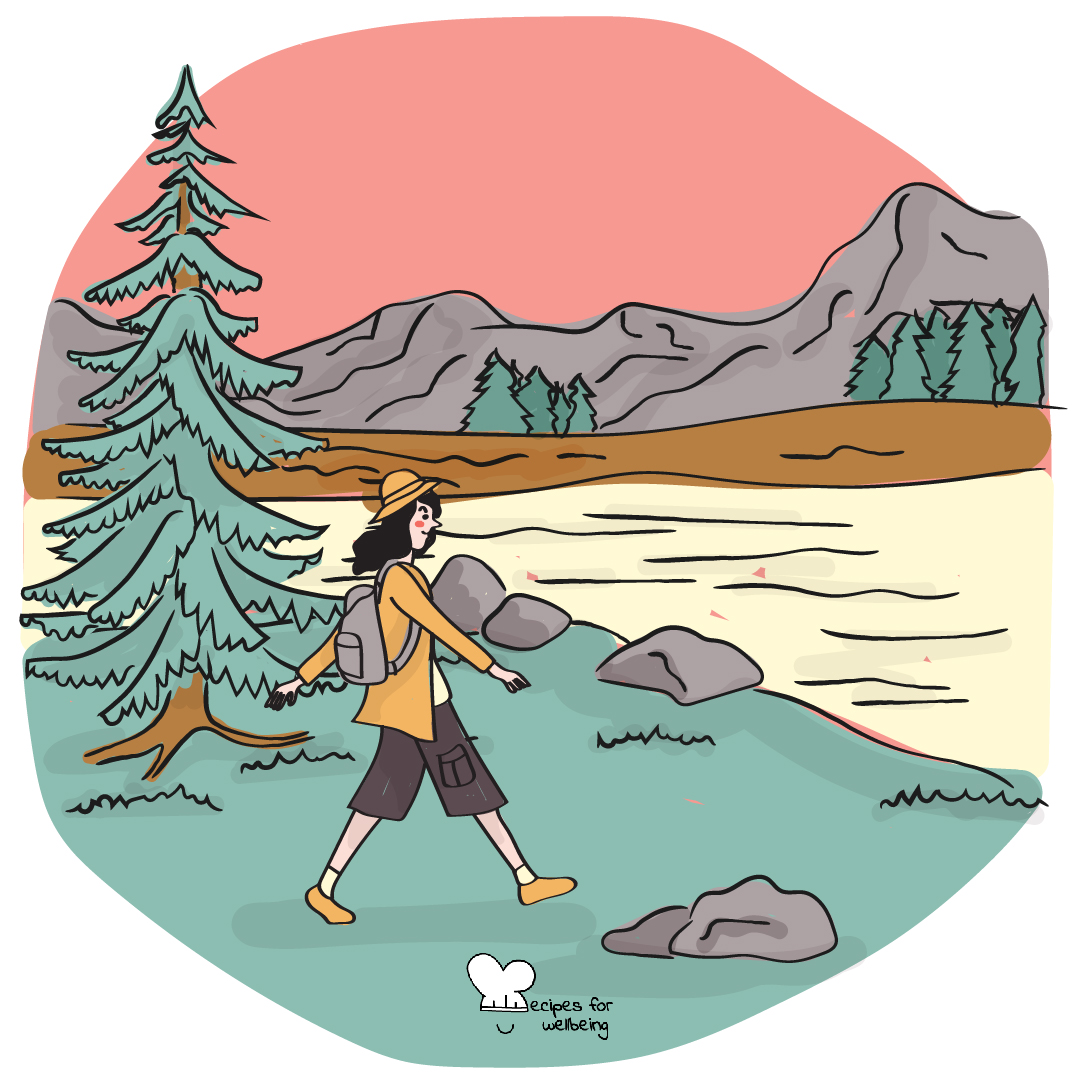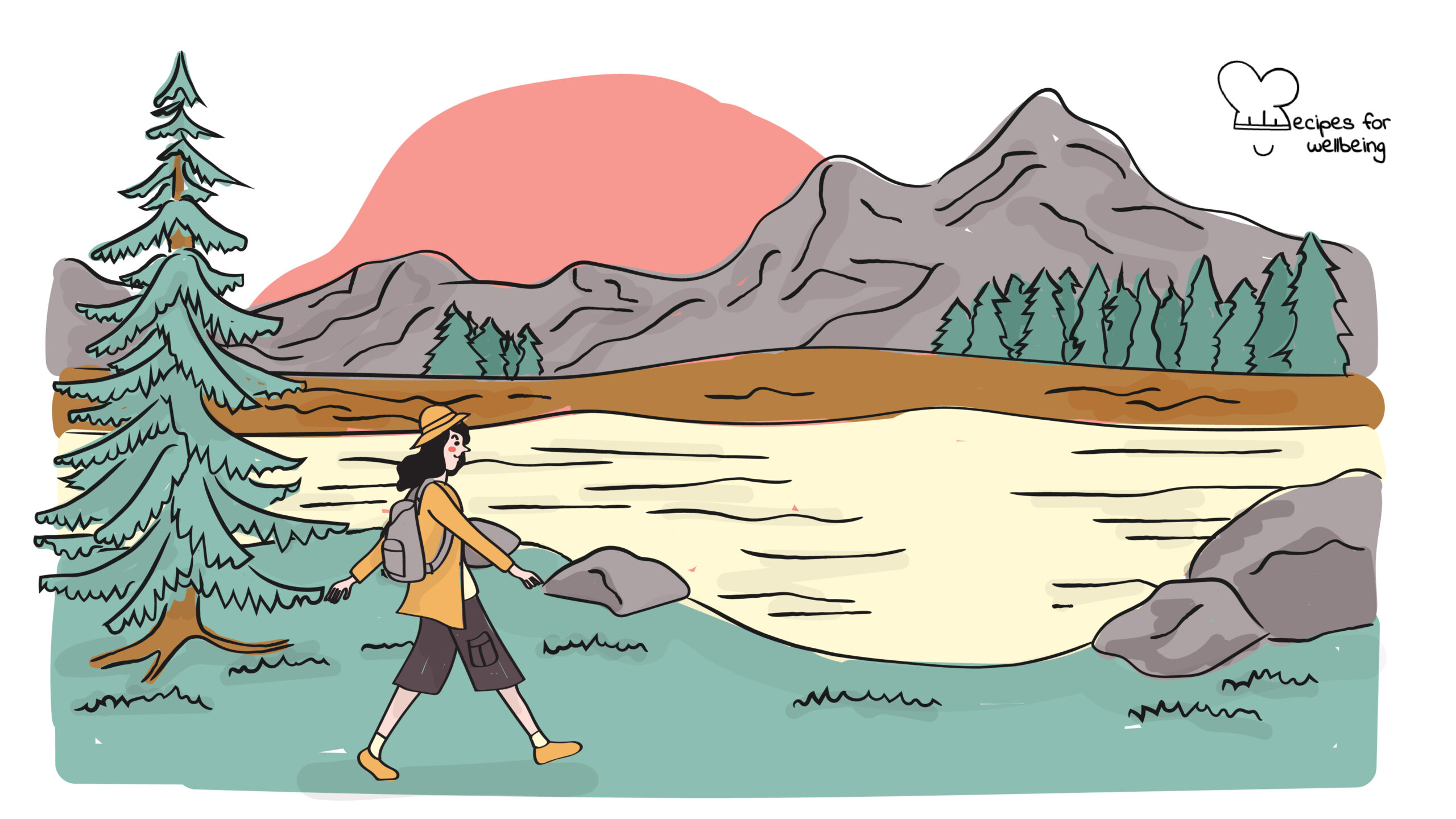
Gratitude walk
All truly great thoughts are conceived by walking. ―Friedrich Nietzsche
👥 Serves: 11-25 people, 2-10 people
🎚 Difficulty: Easy
⏳ Total time: 31-60 minutes
🥣 Ingredients: A group of people (to be divided in groups of three), outdoor space, blindfolds (1 per group)
🤓 Wholebeing Domains: Community, Positive Emotion, Radical Care
💪 Wholebeing Skills: Abundance, Celebration, Closeness, Compassion, Gratitude, Openness, Relating to Others, Trust

Gratitude walk
📝 Description
A trust-based exercise to appreciate the fullness of life.
This activity is a simple yet humbling practice that invites people to cultivate appreciation and gratitude. It focuses on all aspects of wellbeing: mind (focusing on positive emotions), body (walking), heart (fostering acceptance and gratefulness), and spirit (putting everything into perspective). Walking itself solves problems, boosts wellbeing and reduces stress. Similarly, gratitude echoes those qualities. Gratitude heals, destresses, and elevates you towards your goals. Together―walking and gratitude are a powerful combination.
The gratitude walk works particularly well in the morning to help people enter the day with a positive and appreciative mindset. Alternatively, it is a perfect activity to close a day, as it allows people to enter a reflective state. It is also powerful because it builds trust among people, deepening the existing bond.
👣 Steps
Step 1 – Set up (15’)
Welcome everyone and thank them for showing up to this gratitude walk. Mention that quite often changemakers forget to take a moment to appreciate what’s good in their life, because there is always more work to do. Without wanting to discount that the journey is long and difficulties are present, practising gratitude presents numerous benefits. For instance, people who are grateful boost their physical wellbeing: they have a stronger immune system, are less bothered by aches and pains, have lower blood pressure, exercise more and take better care of their health, and sleep longer and feel more refreshed upon waking. From a psychological perspective, they experience higher levels of positive emotions, are more alert, alive, and awake, feel more joy, pleasure, optimism, and happiness. Additionally, gratefulness improves social interactions: people are more helpful, generous, and compassionate, more forgiving and outgoing, less lonely and isolated (Greater Good Science Center).
You may also wish to clarify that gratitude has two main components. First, it’s an affirmation of goodness – the beautiful things in the world, the gifts and benefits we have received. Mention that this doesn’t mean that life is perfect and without obstacles; but it encourages us to identify what’s good in our life. Second, it is about figuring out where that goodness comes from: within ourselves, but also outside – in other people and situations.
Gratitude allows us to celebrate the present; it blocks toxic, negative emotions; and it makes us more stress-resistant. The combination of walking – which in itself solves problems, boosts wellbeing, and reduces stress – and gratitude creates a powerful experience.
Now explain how it works:
- Divide people into triads (groups of three). If two people are left out, it is okay to form a pair. If one person is left out, split a triad into two pairs.
- Hand a blindfold to each group.
- Tell them one person in the group will be blindfolded and the other two will take the blindfolded person under the arms.
- They will guide the blindfolded person on a 10-minute walk while they share what they are grateful for in life. Explain that this is not a dialogue: only the blindfolded person is to speak while the other two people listen actively. The blindfolded person will start their sentence: “I am grateful for…” Whenever they get stuck, they will begin again: “I am grateful for…” If there is a moment of silence, so be it. The other two should not speak but hold the space for their blindfolded companion to dig deeper within themselves.
- One of the two people guiding should keep an eye on the clock to make sure they don’t run over time. When time is up, they signal this to the blindfolded partner by stopping to walk. This is a gentle way to let the blindfolded partner know they should wrap up their last thought.
- At this point, they swap roles and another partner is blindfolded. This is repeated until all three partners have shared what they are grateful for.
- Remind the groups to return to the meeting point (where you are right now) at the end of the three rounds.
- If there are 1-2 pairs (instead of triads), give each partner 15 minutes instead of 10 minutes to share what they are grateful for in life.
Step 2 – Walk (30’)
Set the groups off and take a moment to yourself to reflect on what you are grateful for in life.
Step 3 – Debrief (15’)
Debrief on the experience and invite anyone who would like to speak to share their thoughts and emotions with others. You will be surprised by how humbling and moving this activity is!

